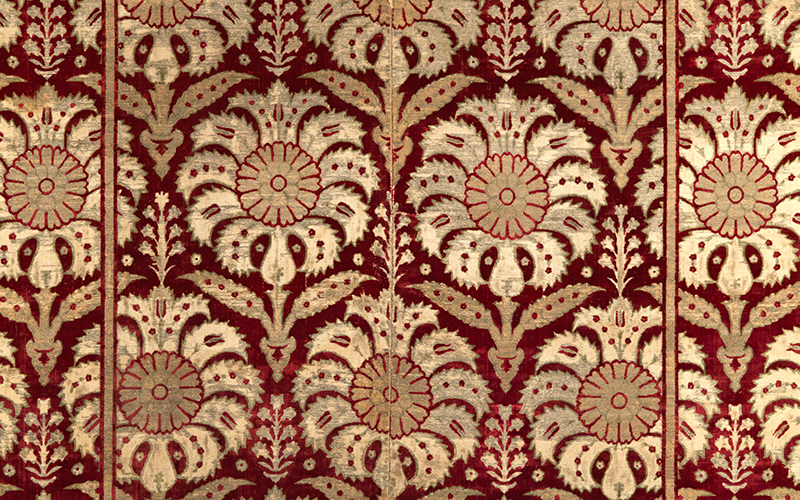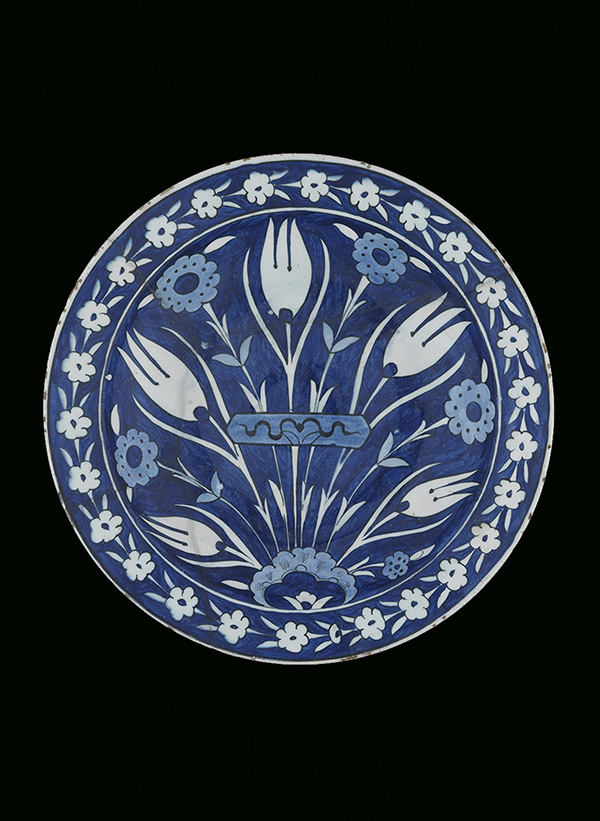Dikran Kelekian

Born in Kayseri, in modern-day Turkey, the Armenian businessman, writer and archaeologist Dikran Kelekian (1867–1951) had a career that ran parallel to that of his contemporary, Calouste Gulbenkian.
In the early 1890s, Dikran and his brother Kevork started a business dealing in art and antiques in Istanbul, and were among the first dealers to introduce artworks from the Middle East to the European and North American markets. The firm was highly successful and quickly expanded to New York, London, Paris and Cairo.
Kelekian was also well regarded as a collector, having exhibited his ceramics collection for several decades in the Victoria and Albert Museum in London, where there are still some pieces belonging to his collection. His works were also loaned to various exhibitions in Europe and the United States, where he lived until the end of his life.
In the early 20th century, experts Jules Guiffrey, from the Gobelins Manufactory, and Gaston Migen, from the Louvre Museum, compiled an illustrated catalogue of Kelekian’s collection of textiles and rugs. The collector ended up giving a copy to Calouste Gulbenkian, possibly to arouse his curiosity about the merchandise he wanted to sell.
Dikran Kelekian joined several archaeological expeditions, particularly in Rayy, Raqqa, Sultanabad and Varamin, and started by selling Raqqa ceramics items to Gulbenkian, later followed by pieces from Iznik and Ottoman textiles. From 1900, Kelekian also began to sell works of modern art, although Gulbenkian didn’t purchase any of these works from the dealer.


As well as Gulbenkian, Dikran sold works to other renowned collectors, such as John D. Rockefeller, Henry Walters and Charles Freer. Kelekian’s curious appearance also sparked the interest of various artists, such as Milton Avery and Walt Kuhn. In 1944, the Durand-Ruel Galleries in New York held an exhibition entitled Kelekian: As the Artist Sees Him, which showed diverse portraits of the Armenian art dealer.
Dikran was close to various artists, for example Mary Cassatt, who ended up painting more than one portrait of his son Charles, heir to his fortune and responsible for the running of the business after his father’s death in 1951. These portraits are currently to be found in museums such as the Metropolitan Museum of Art and the Walters Art Museum. A significant part of Kelekian’s collection is currently in the Metropolitan Museum of Art, in New York.
A Collection of Stories
On a weekly basis, we shared a story around Calouste Gulbenkian’s collection. This section was created in 2020, which is why the articles refer to the Calouste Gulbenkian Museum collection as the Founder’s Collection.
Other stories